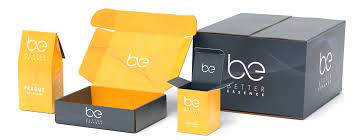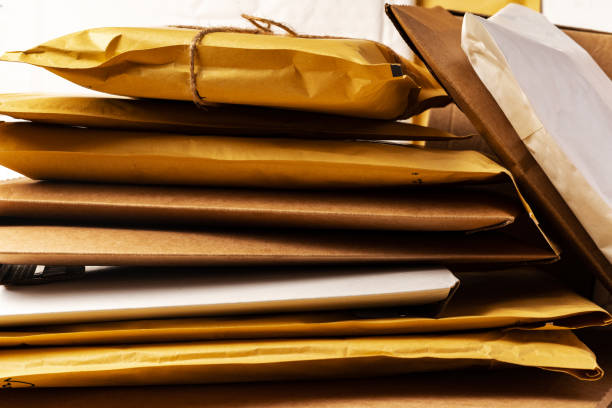How to Create Professionally Designed Custom Mailer Boxes

Not long ago, product packaging was simply that – packaging. There were a few forward-thinking firms who decorated the box or bag their products arrived in, but they were uncommon. For the majority of businesses and their goods, the outside packaging was only a container designed to safeguard the contents throughout shipment from the warehouse to the client.
With the growth of e-commerce and social media, however, this container has taken on a new significance. In some ways, the packaging may be just as important as the products it conveys.
Show Your Name Wisely
First, you must have a solid understanding of your brand’s identity. Without a logo, your organization is simply another faceless entity attempting to sell something. Avoid doing it. Start discovering our brand identity by examining the questions below.
What precisely are you attempting to communicate with the design of your mailer and shipping box? It should be congruent with the general feel of your firm.
Are you aiming for sophistication or silliness?
Moreover, you should see that are eco-consciousness and sustainable packaging important to you?
Also, can customers expect a luxurious experience? Something straightforward? Retro or contemporary aesthetics?
Apply Colors
Colors are an additional method for promoting your brand identity. They aid in evoking a certain atmosphere. Attractive moods that improve the overall aesthetic of your packing boxes. Your consumers may experience various emotions based on the colors you use.
Black and white are classic, refined hues. Warm colors, such as red, orange, and yellow, are often linked with vitality and optimism. Relaxing colors include blue, purple, and green.
Don’t trust us? It is believed that yellow makes people cheerful, whilst blue is supposed to be tranquil. Yes, color, along with several other design components, may either attract or repel customers.
Consider how you want consumers to feel when they view your product’s packaging.
Exists a predominant color trend in your product category? Examine the design strategies used by both successful and unsuccessful rivals. Apply the lessons you’ve learned from their strengths and weaknesses to your own design.
Again, do not always imitate the actions of others. Determine the CMYK or PMS colors that complement your brand and message. Some strategies are popular because they work.
Think About Your Fonts
Even the typefaces used on packing communicate something to the intended audience. Although there are several options, make your approach to the letters and numbers on the box design straightforward.
Serif typefaces are classic. A sans serif font is more contemporary. Want to convey a certain degree of sophistication? Cursive or script lettering should be used. A braver audience will be attracted to an all-caps approach.
You probably already knew all of this based on the typefaces that appeal to you. As we mentioned, keep things simple. You want to create a favorable impression quickly.
Most importantly, maintain clarity.
Use Patterns
Patterns are a great method to provide intriguing focus points to a box’s design.
Art Deco designs are often used to create a retro appearance. Line art that mimics circuit boards helps your brand portray a futuristic aesthetic.
You might even decide to blend styles to make your business stand out in a sea of uniformity.
Don’t be afraid to be imaginative with your design, regardless of the path you follow.
Examine what your competitors are doing to see what is effective. Or how businesses in other sectors employ patterns to establish a distinct brand image. It is an excellent approach to stimulating the imagination.
Additionally, sites such as Pinterest and Instagram are virtual treasure troves of creative inspiration.
Spend time studying your particular business as well. Determine what draws people to your sector or what customers who buy your items or comparable products find most enticing.
A word of caution with patterns is that it is simple to overuse them. Create a design that brings together all of the diverse parts, including the logo, colors, fonts, and patterns.
You want an overall packing design scheme that is instantly identifiable and attracts buyers’ attention.
Create Layouts Cleverly
Box and package design may be difficult to master, particularly if this is your first time establishing your brand and its message. Before moving on, let’s briefly review the most important features.
Initially, you must establish your brand, your objectives, and the things you offer. Frequently, the package will be the first item that people see. Are you selling the goods or your brand? The answer drives your design strategy.
If it’s a brand, devote additional attention to ensuring that your logo and message (as well as what you want your firm to represent) stand out. If it’s a product, maintain the emphasis on what’s in the box, what makes it so fantastic, and why someone would want to buy it.
Next, understand your customers. And not simply who they are and what they will find appealing. Comprehend their buying patterns, interests, and wants, as well as the channels via which they will interact with your brand and product lines.
Knowing who you are appealing to and how you are appealing to them provides solutions to a number of design-related concerns.
Finally, get inspiration. Do not just sketch a logo and place it on a box. Look for a selection of box templates and other box design recommendations to enhance your presentation with genuine consideration. Not simply things that will appeal to your target audience, but also aesthetics that represent your brand’s pride and thoughtfulness.
Consumers are themselves a considerate group. Instantaneously, people can distinguish between a firm that cares about what it does and how it presents itself and one that does not.
Make it obvious what you stand for and include it into the overall design of your package, whether you portray yourself as environmentally friendly, contemporary, and progressive, or just a no-frills store with a great product.
Locating A Designer
Now, it is one thing to create packing boxes. Or, at the very least, identify the components you want to include in your strategy. Putting these concepts into practice is a whole other matter.
You may lack the time, ability, or motivation to generate your own package design concepts. If this describes you, have no fear. There are several tools available to assist you in locating the ideal designer for your demands and budget.
Your search can begin with these points:
Design companies are often more costly, but if you’re targeting a broad market, you may discover a designer that can come up with a fantastic package design idea.
On these crowdsourcing portals, designers vie for your business. You assume less risk since you are not obligated to hire anybody.
Freelance markets: Upwork and Fiverr are examples of freelance marketplaces.
The gorgeous design is everywhere, so if you find anything you like, do not be hesitant to inquire about it.
It is crucial to realize that hiring a third party to assist with the design of your packing box does not imply you are completely relinquishing control. (Obviously, this option is accessible if you like it.)
Instead, collaborate with a person or group that comprehends your goals and objectives and can readily transform your concepts into usable designs.
Your designer does not need to be an expert in your product area or business. Although it may be beneficial, a general track record of successful, marketable concepts is more essential.
When reviewing design portfolios, it is essential to search for designers with specialized box design expertise.
Conclusion
You must also consider the functionality of your box design and its impact on the entire consumer experience.
Certainly, this is hardly the showy, seductive side of the commercial presentation. However, it is crucial for growing your brand, boosting client happiness, and boosting your bottom line.
Everything from the kind of boxes used to the internal content to the external labeling contributes to the design and unpacking experience.





